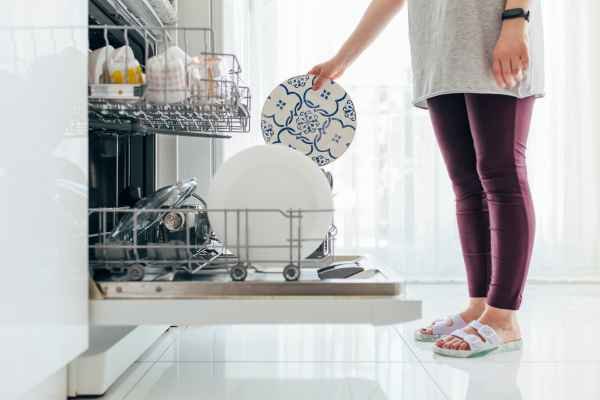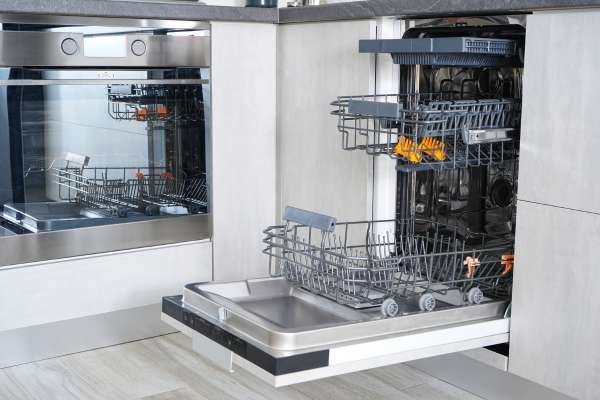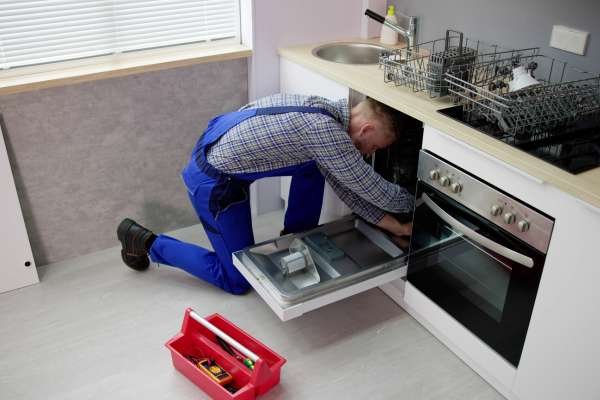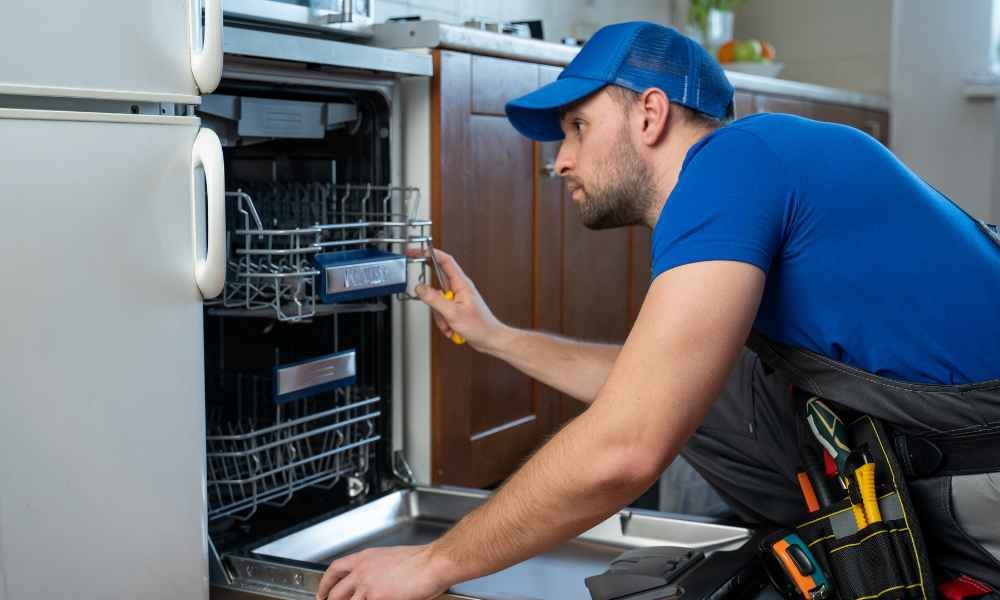Unlocking a GE dishwasher may sound like a complicated task, but in most cases, it’s a simple fix that anyone can manage—even if you’re not a kitchen appliance expert. Whether the controls are unresponsive or a mysterious Fasten icon is lit up, there’s usually a straightforward explanation. This guide is designed to walk you through the most common reasons your GE dishwasher is locked, how to spot the signs, And what the different Fasten features mean so you can quickly get back to clean dishes without stress.
Understanding Why Your GE Dishwasher Might Be Locked
Your GE dishwasher might be locked for a variety of practical reasons. One of the most common is the Control Lock function, designed to prevent unintentional button presses—especially useful in homes with curious kids or when cleaning the control panel. Sometimes, the Delay Start feature can also mimic a locked control panel, confusing users into thinking the dishwasher is stuck. Other times, your dishwasher may be trying to protect itself by entering Fasten mode due to internal errors, overheating, or power interruptions. Regardless of the reason, understanding the cause is the first step in getting things back on track.
Common Signs Your GE Dishwasher Is in Lock Mode
It’s usually pretty obvious when a GE dishwasher enters Fasten mode—especially if you know what to look for. You might notice that pressing any button produces no response, or a small “Lock” or “Control Locked” indicator light is illuminated. In some models, the control panel may flash, beep, or display a padlock symbol. If the dishwasher seems completely unresponsive but is still powered on, chances are the Fasten feature is active. Recognising these symptoms can save you from assuming the appliance is broken when it’s simply doing its job to stay secure.
Different Types of Lock Features on GE Dishwashers
GE dishwashers come with a few different locking options, each serving a specific purpose. Here’s a breakdown:
Control Lock
The Control Fasten is the most common feature, meant to prevent unintended use of the dishwasher’s control panel. It’s often activated by holding down a specific button or button combination—like “Heated Dry” or “Lock”—for several seconds. Once engaged, none of the controls will respond until the lock is released the same way.
Child Lock
This safety feature is particularly helpful for families. It ensures that children can’t accidentally start or change a wash cycle, or open the dishwasher mid-cycle. Child locks typically disable both the door latch and control panel, depending on the model.
Delay Start Lock
Delay Start allows you to program your dishwasher to begin washing after a set amount of time. While it’s running in this mode, the control panel may appear locked, even though the unit is just waiting to start. This isn’t technically a Fasten, but it can act like one if you’re not familiar with the feature.
How to Identify If the Lock Light Is On or Flashing
Most modern GE dishwashers include indicator lights or digital icons to show when a Fasten is activated. Look for a small light labeled “Lock,” “Control Locked,” or even just a padlock symbol—often found near the top of the control panel. In some models, this light will remain steadily on when the lock is active, while in others it may blink. If your controls aren’t responding and this light is visible, it’s a clear sign the Fasten feature is enabled. Always consult your specific model’s manual for exact light behavior, but generally, a blinking lock light means a function is temporarily restricted and needs to be manually released.
How Do You Unlock a GE Dishwasher: The Most Reliable Methods
There are three primary methods you can try to unlock your GE dishwasher, and they work across most models.
Manual Unlock via the Control Panel
The simplest method is using the designated control panel lock button. On many GE dishwashers, there’s a specific button labeled “Lock” or “Control Lock.” Press and hold this button for 3–5 seconds until the lock indicator light turns off. That’s usually all it takes to restore functionality.
Unlocking with a Key Combo (e.g., Heated Dry + Start)
If your dishwasher doesn’t have a dedicated lock button, it may require a combination of buttons to unlock. A common combo is pressing and holding the “Heated Dry” and “Start” buttons at the same time for 3–5 seconds. Some models may use “Dry Boost” + “Steam” or similar combinations—check your user manual or model-specific guide.
Using the Reset Button to Unlock
If neither of the above methods works, try resetting your dishwasher. Turn off the power to the unit by unplugging it or switching off the circuit breaker for about one minute. Then restore power and see if the control panel becomes responsive. This hard reset often clears any temporary glitches and deactivates the lock.
Step-by-Step Guide to Unlocking a GE Dishwasher
If you’re unsure which approach to try, follow this step-by-step guide to methodically unlock your GE dishwasher and get it back in action:
Step 1: Locate the Lock Indicator or Buttons

Examine your dishwasher’s control panel to find the lock icon, which is often shaped like a padlock or labeled “Control Lock.” Also, identify any buttons that may activate or deactivate the lock function, such as “Heated Dry,” “Start,” or “Delay.”
Step 2: Press and Hold the Correct Button Combination

Once you’ve identified the right buttons, press and hold them simultaneously for at least 3 seconds. For example, try “Heated Dry” and “Start,” or simply hold “Lock” if it’s a standalone button. Don’t release the buttons too early—wait for a few seconds to allow the panel to respond.
Step 3: Wait for Confirmation Beep or Light Change

GE dishwashers often give a signal when the lock is released. Listen for a beep or chime, or watch for the lock indicator light to turn off. This tells you that the control panel is now unlocked and ready to use.
Step 4: Test the Controls to Ensure Unlocking Worked

Finally, try pressing other buttons on the control panel to confirm they’re responding. If everything works normally again, you’ve successfully unlocked your dishwasher. If not, repeat the steps or try the reset method as a backup.
How to Reset a GE Dishwasher That Won’t Unlock
Sometimes, a hard reset is the only way to regain control over a locked GE dishwasher. To do this, unplug the appliance or turn off its circuit breaker for at least 60 seconds. This will allow the internal system to clear any stuck processes. After turning it back on, wait a few seconds before attempting to unlock it again. For models with a “Start/Reset” button, holding it for about 3 seconds can also initiate a soft reset. This method works best when the lock function is unresponsive due to software glitches.
Troubleshooting When the GE Dishwasher Stays Locked
If your dishwasher still won’t unlock after a reset, dig a little deeper. Check for sticky or unresponsive buttons that may be preventing the lock feature from disengaging. Moisture or debris on the control panel can sometimes interfere with touch sensors—gently clean it with a dry cloth. Also, inspect the child lock and delay start features to ensure they’re not activated. If the lock light keeps flashing, try pressing the designated unlocking combination again while the door is fully closed.
Understanding Error Codes That May Appear During Lock Mode
GE dishwashers often display error codes when something’s wrong. These codes can appear when the appliance is locked due to malfunctions like overheating, water drainage issues, or door latch problems. For instance, an “LE” code may indicate a locked motor, while “C1” could relate to drainage. When in lock mode, these codes may be your only clue about what’s going on internally. Refer to your model’s manual or GE’s website for a full list of codes and their meanings.
What to Do If the Control Panel Is Unresponsive
An unresponsive control panel might look like a lock problem but could actually signal a power supply issue. Check that the dishwasher is securely plugged in and that your outlet or breaker hasn’t tripped. If there’s power but the panel remains dead, try a full power cycle. In some cases, moisture buildup or electrical surges can temporarily disable the controls. Letting the unit sit unplugged for several minutes may restore functionality.
How to Unlock a GE Dishwasher During a Cycle Without Damaging It
Unlocking a GE dishwasher mid-cycle requires caution to avoid damaging the machine or causing leaks. First, try pausing the cycle by pressing the “Start/Reset” button. Wait for the unit to drain and pause (usually signaled by a beep or blinking lights). Then, press the unlocking button combination while the door remains closed. Forcing the door open during active operation can trigger safety locks and error codes, so always wait until the motor noise stops before attempting access.
Tips to Prevent Your GE Dishwasher from Getting Locked Again
To avoid future lock frustrations, make it a habit to familiarize yourself with your dishwasher’s control panel layout and locking features. Avoid pressing multiple buttons at once, especially while wiping the panel. Keep the touchpad clean and dry, as moisture can activate the lock unintentionally. Also, teach household members about the lock function to prevent accidental activation. Setting a reminder to check the lock status before starting a cycle can save time and stress.
When to Contact GE Customer Support or a Technician
If all else fails and your dishwasher remains locked despite trying resets and button combos, it may be time to call in the pros. GE’s customer support can help guide you through advanced troubleshooting steps or arrange a service visit. Issues like a faulty door latch, control board failure, or wiring problems typically require expert attention. Be ready to provide your model number and a summary of what you’ve already tried.
Maintaining Your Dishwasher to Avoid Future Lock Issues
Routine maintenance is key to keeping your GE dishwasher working smoothly and avoiding lock problems. Clean the filter regularly, wipe down the door seal, and avoid overloading racks. Perform a monthly cleaning cycle with dishwasher-safe cleaners or white vinegar to keep sensors and internal components functioning properly. Well-maintained machines are less likely to experience lock-related malfunctions, meaning you’ll spend more time enjoying clean dishes and less time pressing buttons in frustration.
